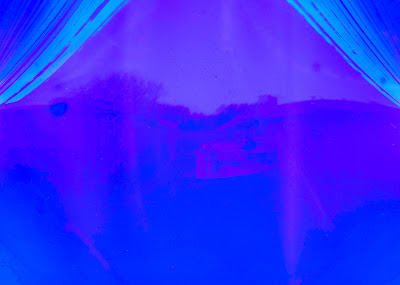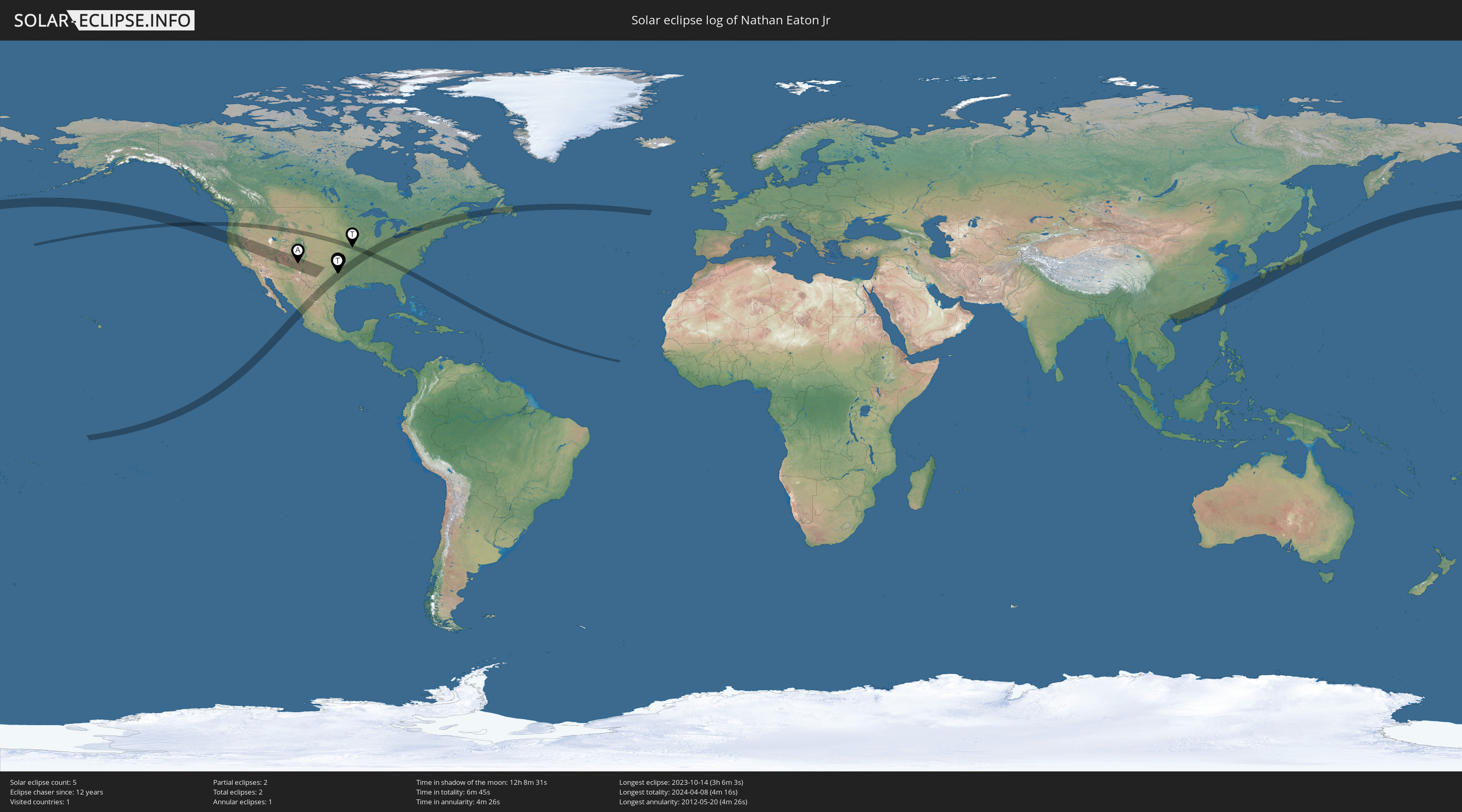As covered in previous posts, late last year I discovered a product called the Solarcan, a pinhole camera created using an aluminum can with a small hole in the side and photographic paper inside, all to capture long-period exposures (weeks, months, years) of the Sun as it moves across the sky each day, images called solargraphs.
I bought a five-pack of Solarcans in December and used one to shoot a sample shot to share with my grandkids; see Phase 1 post. I gave the other four to them as Christmas gifts.
In the Phase 2 posts, I covered helping my grandkids set up their Solarcans. The plan for each one was to have them up about 6 months. For the one Olivia and I put up (see this post), it turned out we needed to take it down a little early. On July 9th, we took it down. Here is the raw scan.
Although the arcs traced across the sky by the sun are pretty easy to make out at the top, they do look a bit weird. One reason is that this photo, captured with a camera created with a piece of photographic paper inside a can with a pinhole on the opposite side of the can, is a negative, i.e., things that are bright appear dark and vice versa.
So, the first step in processing a Solarcan solargraph after scanning it is to convert it from a negative to a positive. From there, everything else is about getting an image in which some of the details come out (e.g., adjusting exposure and contrast) and adjusting color and other variables to get something that looks interesting. The full workflow for this is described in the
Solarcan instruction booklet.
With Olivia's, I played around with two different color schemes, one blue and one magenta. Olivia likes the magenta one best. Here they are.
On the left is their fence with the neighbor's trees just beyond. On the right is their house including the chimney at the far end of the roof. In the center is their patio with furniture, a grill, etc.
As for streaks across the top, those represent the path of the sun arcing across the sky from East to West every day during the 140 days the Solarcan was up.
As described in the earlier post, the gaps are the result of weather, specifically clouds. Bright, sunny days left a full arc from one side the to other. Overcast days left dark arcs where bright enough sunlight didn't hit the photographic paper to leave an imprint. Partly cloudy days resulted in arcs across the solargraph with gaps here and there.
By the way, the reason the arcs of the Sun disappear off the top of the page is just because we mounted the Solarcan vertically and as the Sun got higher in the sky during mid-day, the light from it didn't fall directly on the photographic paper. If we had mounted it angled up slightly, then we would have gotten the full path of the Sun each day.
Next up, I'll post about developing the solargraphs for Jack and Harper's Solarcans which we took down this week. Kaili's will stay up until about Christmas. Stay tuned for more images!
As always, click on an image to view full-screen.
























No comments:
Post a Comment